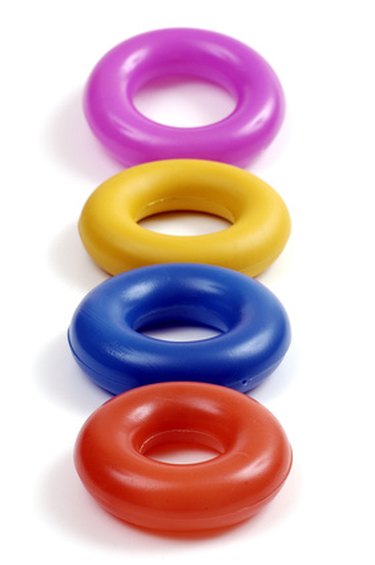Things You'll Need
O-ring
Calculator
Ruler
Pencil
Paper

O-rings are elastic circles that either shrink and expand between moving parts or attach to non-moving parts and are used to seal objects like pipes and car fuel injectors. How far they squeeze in or out when attached to moving parts depends upon the size of the o-ring and the part it is attached to. To calculate O-ring squeeze follow these quick steps to ensure the o-ring is correct for the application intended.
Step 1
Lay the o-ring out flat, measuring its length in inches straight from one inside tip to another while determining its inner diameter, or gland depth with a ruler. Write down the number with pencil and paper.
Video of the Day
Step 2
Hold the o-ring steady, measuring the length in inches from one outside tip to the other while determining its cross-sectional diameter with a ruler. Write down the number with pencil and paper.
Step 3
Find your o-ring's squeeze amount in inches by subtracting the gland depth from cross-sectional diameter with a calculator. For example, if your o-ring's cross-sectional diameter is 1.25 inches and its gland depth is 1.20 inches, subtract 1.20 from 1.25 to determine that the o-ring is able to squeeze out a total of .05 inches.
Step 4
Find the o-ring's squeeze percentage in inches by dividing the squeeze inches by the gland depth with a calculator. For example, if the o-ring's squeeze inches are .05 and its gland depth is 1.20 inches, divide .05 by 1.20 to determine that the o-ring's squeeze is about 4.16 percent.
Tip
Each type of o-ring has an ideal squeeze percentage that tells how far that o-ring should be able to squeeze, with face o-rings between 20 and 30 percent, static male and female o-rings between 18 and 25 percent, reciprocating o-rings between 10 and 20 percent and rotary o-rings between 0 and 10 percent. If the o-ring's squeeze percentage does not fall in its type's range, replace the o-ring.
Video of the Day